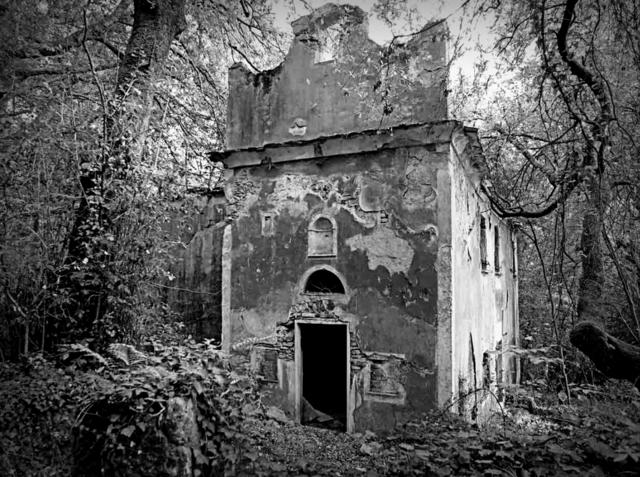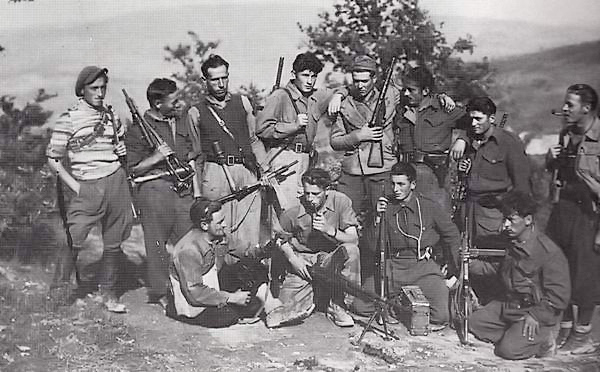The Secret Press Posted by Geoff on Jun 8, 2016 in Uncategorized
The beauty of living in Italy is that it gives you time to explore the details. From the point of view of Italy’s historical, artistic and cultural heritage, tourists are quite literally overwhelmed by the list of things that one simply ‘must see’. But for those who enjoy getting off the beaten track and exploring the hidden treasures (me!), there are some fascinating discoveries to be made. And these discoveries often reveal lesser known aspects of Italy’s history.
Here’s an interesting example I that recently discovered:
La Stamperia Nascosta
Difficilmente questo è un luogo che può entrare in un itinerario turistico, eppure la voglia di ricordare, di ridare voce alla memoria, di rendere omaggio a chi ha sacrificato la propria vita per la libertà che oggi, troppo spesso, diamo per scontata, ha fatto sì che negli ultimi anni a questo sito, perduto nei boschi tra Lerici e Montemarcello, fosse restituita la sua dignità e il suo enorme valore storico e sociale.
It seems unlikely that this place could be included in a tourist route, yet the desire to remember, to bring memory back to life, to pay homage to those that sacrificed their lives for a freedom that is often taken for granted these days, has meant that in the last few years this site, hidden in the woods between Lerici and Montemarcello, has regained its dignity and its enormous historical and social value.
L’edificio è quello di una villa seicentesca, utilizzata come casino di caccia dai Conti Picedi Benettini ed oggi in totale stato di abbandono e di degrado. Ma il suo valore storico non risiede tanto nelle sue antiche origini o negli affreschi ottocenteschi che è ancora possibile vedere sulle pareti interne, quanto piuttosto nel ruolo che svolse durante la Seconda Guerra Mondiale.
The building is a 17th century villa which was used as a hunting lodge by the Counts Picedi Benettini, now in a state of complete abandonment and decay. But its historical value isn’t due so much to its ancients origins, or the 19th century frescoes that it’s still possible to see on the internal walls, but rather to the role that it played during the Second World War.
Villa Volpara, meglio conosciuta come Villa del Fodo, durante la Resistenza antifascista divenne infatti sede di una stamperia clandestina che lavorò costantemente, beffando i tedeschi, per oltre nove mesi, dal novembre del 1943 fino al 10 settembre 1944.
Villa Volpara, better known as Villa del Fodo, became a clandestine print shop during the antifascist resistance, working constantly, and mocking the Germans, for more than nine months between November 1943 and the 10th of September 1944.
An Ideal Location
Villa Volpara was chosen due to its ideal location: not far from the busy port town of Lerici, but far enough off the beaten track and sufficiently well hidden in thick woodland to give some measure of security.
The owner, a liberal antifascist from Carrara, allowed the Partisans to set up shop there. But first they had to find a way of getting their heavy printing equipment to the remote spot without being caught:
According to one of the partisans, the extremely heavy printing press was … “prelevata a Spezia e nascosta in un carro coperto di fieno trainato da un robusto cavallo. Giunta a destinazione, fu montata all’interno di una cisterna sotterranea nell’aia della villa, in modo tale che non se ne sentisse il rumore durante il funzionamento. Un partigiano stampava, l’altro sorvegliava.”
… “picked up from La Spezia, hidden under hay in a cart, and pulled by a strong horse. When it arrived at its destination it was assembled in an underground cistern below the terrace of the villa so that no noise could be heard when it was working. One partisan printed, the other kept watch.”
It was here that the leaflets for the general strike of March 1944 were printed. However, the Partisans risked their lives every day producing anti-fascist propaganda aimed at spreading the word of freedom.
The Partisans’ clandestine operation came to an abrupt end when on the 10th of September 1944 a German patrol arrived at the villa. The lookout managed to warn his comrades and the press was immediately shut down. Pretending to be the warden of the villa, the lookout discovered that the Germans intended to occupy the villa for military purposes on the following day.
The villa was abandoned by the Partisans that night, and one can only imagine the surprise of the Germans troops upon discovering the hidden printing press when they arrived!
If you find yourself in the Lerici area, and fancy a treasure hunt in the nearby woodlands … good luck finding Villa Volpara. I’ve tried to find you a map and some clear directions without success. But hey, that’s what adventures are all about! I intend to go hunting for it myself, so if I manage to find it I’ll update this blog with details of its TOP SECRET location (shhhh, it’s very hush hush!) … and if you don’t hear from me within the week, send the search and rescue team!
P.S. Here’s some good news about a project to restore the villa: Villa Volpara Restoration
N.B. The Italian excerpts in this article were taken from the website: Trame Di Lunigiana

Build vocabulary, practice pronunciation, and more with Transparent Language Online. Available anytime, anywhere, on any device.






Comments:
Norma Tingram:
One of your sentences begins “L’edificio è quello di una villa seicentesca”. In my ignorance I would have said “L’edificio è una villa seicentesca”; I would not have known to insert “quello di”. Can you explain why that’s needed?
Geoff:
@Norma Tingram Ciao Norma, there’s nothing wrong with your version: “L’edificio è una villa seicentesca”, the ‘quello di’ is merely an embellishment.
In fact this florid journalistic style of written Italian is not my favourite to translate because it’s full of so many redundant words that when translated literally into English sound a bit ridiculous.
I would have preferred: “Si tratta di un villa seicentesca…” which would translate something like “The subject is a 17th century villa…”
A presto, Geoff 🙂
Rita Kostopoulos:
Molto interessanti queste scoperte storiche.
Molto grata,
Rita